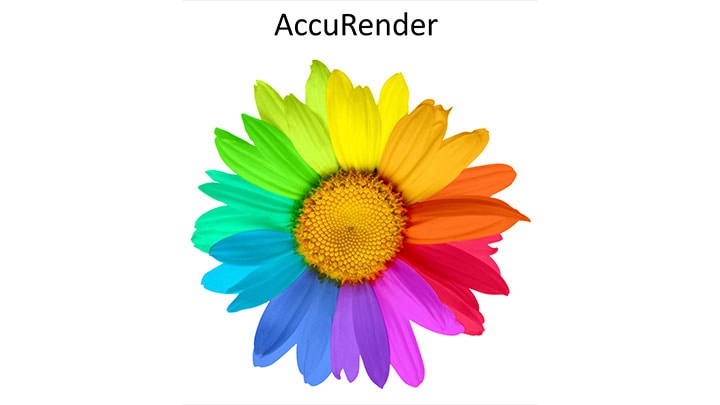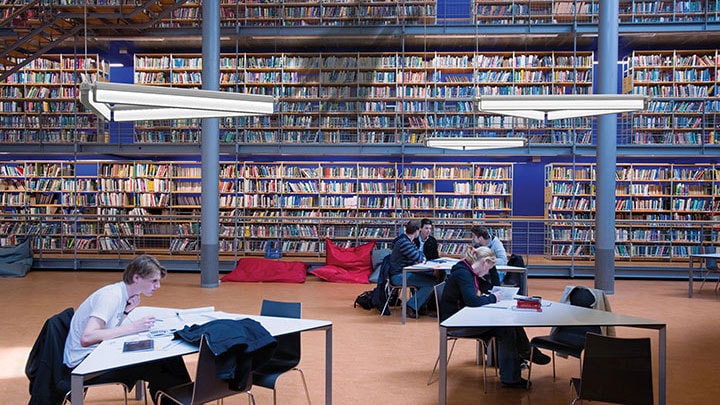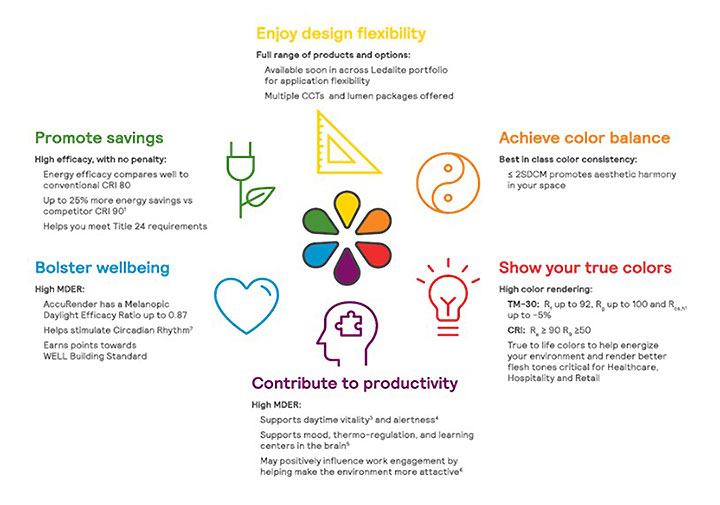
More is demanded from the lighting designer. Lighting designs are challenged to meet visual requirements while supporting occupant wellness, providing a comfortable and engaging lighting experience, and delivering non-energy benefits of lighting such as task performance and facilitating collaboration …. and using responsible amounts of energy.
The Department of Energy’s SSL R&D program, in response to this challenge, has introduced a new model characterizing the effectiveness, efficiency of a lighting system and efficacy of the application. Lighting Application Efficacy model is a framework of which framework provides designers of lighting systems and applications a tool to improve the way we differentiate lighting performance for a given application.
These are components of this framework:
Spectral efficiency
Until now, the process of balancing tradeoffs to make an inflexible energy saving goal using only Lighting Power Density (LPD) as the metric often required compromises including sacrificing:
Color quality preferences sacrificed to code and rebate efficacy requirements. Simply put, currently, specifying CRI 90 vs CRI 80 means sacrificing efficacy (typically around 20-25% lower efficacy for CRI 90) and and compromising on energy savings targets. Visual comfort sacrificed to rigidly adhering the uniform distribution of 300 lux at a horizontal task plane 30” AFF from the ceiling. Design flexibility sacrificed by the lack limited product choices and form factors available meeting energy, cost, and aesthetic requirements.
These sacrifices are no longer necessary. With careful spectral engineering (and a little bit of color science magic) you can have it all. Design flexibility is ensured by offering the high efficacy AccuRender to meet your energy, cost, and aesthetic requirements. Starting with our iconic product families: ArcForm, EyeLine, ModiFly and TruGroove, we offer a range of design options for recessed, wall, suspended linear and configurable shapes.

AccuRender accommodates color quality preferences, critical color rendering excellence CRI ≥ 90 and R9 ≥ 50. Meets Preference, Vividness, and Fidelity criteria recommended in TM-30 Annex E. Visual comfort insured by no direct view of light source, distribution choices and UGR glare ratings <19 AccuRender’s design flexibility supports the ability of the design to satisfy visual, biological and behavioral lighting requirements, delivering additional value to the project.


November 14, 2023
How lighting technology can help reduce risks to migrating birds